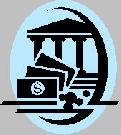
 |
|
| Financial Terms | |
| Slippage |
|
Information about financial, finance, business, accounting, payroll, inventory, investment, money, inventory control, stock trading, financial advisor, tax advisor, credit.
Main Page: financial advisor, money, inventory control, payroll, inventory, accounting, financial, tax advisor, |
Definition of Slippage
SlippageThe difference between estimated transaction costs and actual transaction costs. The difference is
Related Terms:Trading costsCosts of buying and selling marketable securities and borrowing. Trading costs include Target cash balanceOptimal amount of cash for a firm to hold, considering the trade-off between the Agency costsThe incremental costs of having an agent make decisions for a principal. Carring costscosts that increase with increases in the level of investment in current assets. Day tradingRefers to establishing and liquidating the same position or positions within one day's trading. Execution costsThe difference between the execution price of a security and the price that would have Financial distress costsLegal and administrative costs of liquidation or reorganization. Also includes  Friction costscosts, both implied and direct, associated with a transaction. Such costs include time, effort, Incremental costs and benefitscosts and benefits that would occur if a particular course of action were Information costsTransaction costs that include the assessment of the investment merits of a financial asset. Insider tradingtrading by officers, directors, major stockholders, or others who hold private inside Last trading dayThe final day under an exchange's rules during which trading may take place in a particular Market impact costsAlso called price impact costs, the result of a bid/ask spread and a dealer's price concession. Market timing costscosts that arise from price movement of the stock during the time of the transaction Opportunity costsThe difference in the performance of an actual investment and a desired investment Price impact costsRelated: market impact costs  Program tradingTrades based on signals from computer programs, usually entered directly from the trader's Round-trip transactions costscosts of completing a transaction, including commissions, market impact Search costscosts associated with locating a counterparty to a trade, including explicit costs (such as Sunk costscosts that have been incurred and cannot be reversed. TradingBuying and selling securities. Trading halttrading of a stock, bond, option or futures contract can be halted by an exchange while news is Trading paperCDs purchased by accounts that are likely to resell them. The term is commonly used in the Euromarket. Trading postsThe posts on the floor of a stock exchange where the specialists stand and securities are traded. Trading rangeThe difference between the high and low prices traded during a period of time; Transactions costsThe time, effort, and money necessary, including such things as commission fees and the Avoidable costscosts that are identifiable with and able to be influenced by decisions made at the business Direct costscosts that are readily traceable to particular products or services. Fixed costscosts that do not change with increases or decreases in the volume of goods or services Indirect costscosts that are necessary to produce a product/service but are not readily traceable to particular products or services – see overhead. Period costsThe costs that relate to a period of time. Semi-fixed costs costs that are constant within a defined level of activity but that can increase or decrease when Semi-variable costscosts that have both fixed and variable components. Standard costsA budget cost for materials and labour used for decision-making, usually expressed as a per unit cost that is applied to standard quantities from a bill of materials and to standard times from a Sunk costscosts that have been incurred in the past. capitalization of costsWhen a cost is recorded originally as an increase fixed expenses (costs)Expenses or costs that remain the same in amount, overhead costsOverhead generally refers to indirect, in contrast to direct, carrying costscosts of maintaining current assets, including opportunity cost of capital. costs of financial distresscosts arising from bankruptcy or distorted business decisions before bankruptcy. fixed costscosts that do not depend on the level of output. shortage costscosts incurred from shortages in current assets. sunk costscosts that have been incurred and cannot be recovered. variable costscosts that change as the level of output changes. Menu CostsThe costs to firms of changing their prices. Costs Capitalized in StealthA particularly egregious form of aggressive cost capitalization Policy Acquisition Costscosts incurred by insurance companies in signing new policies, including expenditures on commissions and other selling expenses, promotion expenses, premium Political CostsThe costs of additional regulation, including higher taxes, borne by large and Preopening CostsA form of start-up cost incurred in preparing for the opening of a new store or facility. Start-up Costscosts related to such onetime activities as opening a new facility, introducing Trading SecurityA debt or equity security bought and held for sale in the near term to generate income on short-term price changes. Funding CostsThe price of obtaining capital, either borrowed or equity, with intent to carry on business operations. Undepreciated Capital CostsThe tax definition of the value of an asset that is eligible for tax deprecation. Expense ratioThe percentage of the assets that were spent to run a mutual fund (as of the last annual Related to : financial, finance, business, accounting, payroll, inventory, investment, money, inventory control, stock trading, financial advisor, tax advisor, credit. |